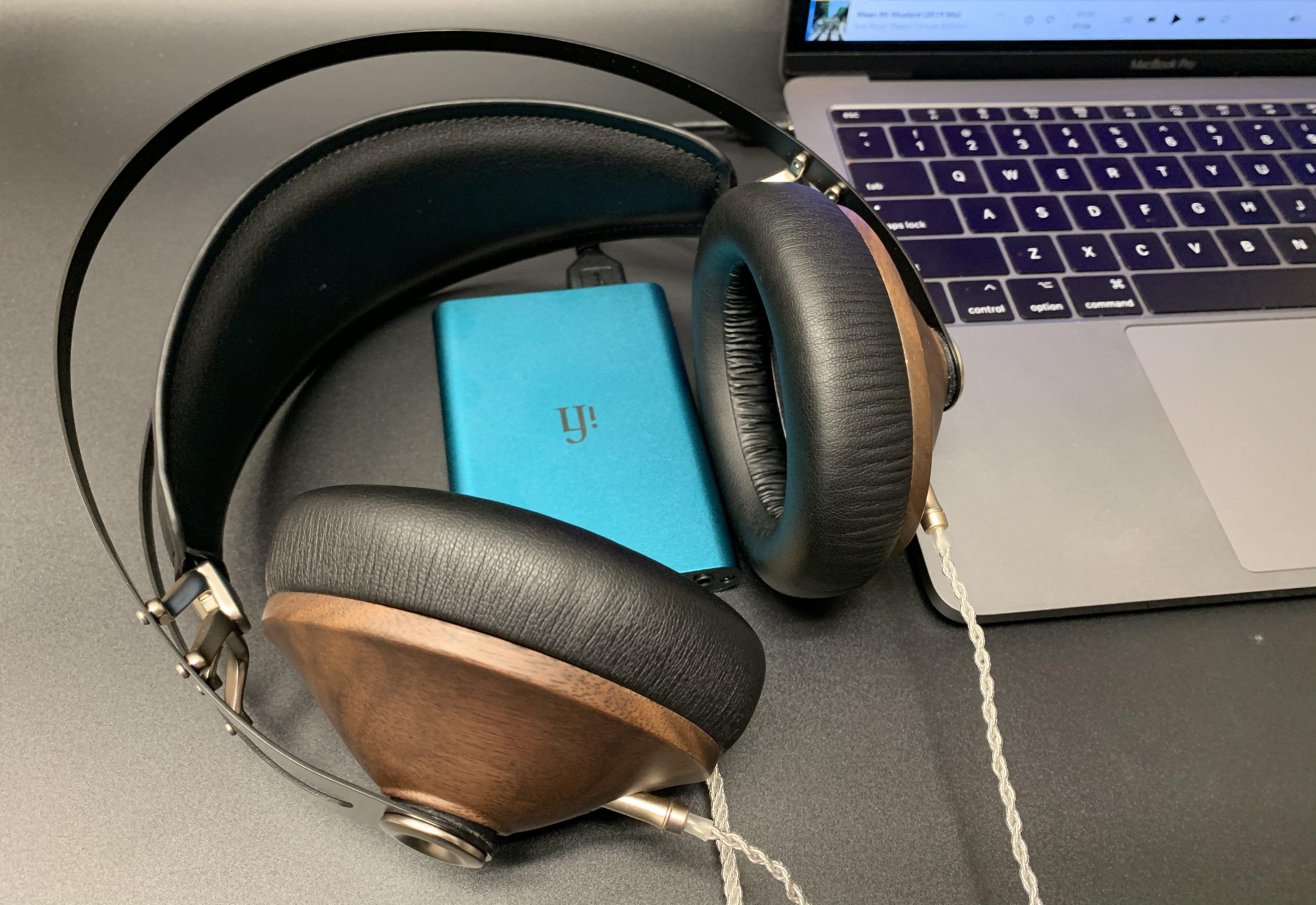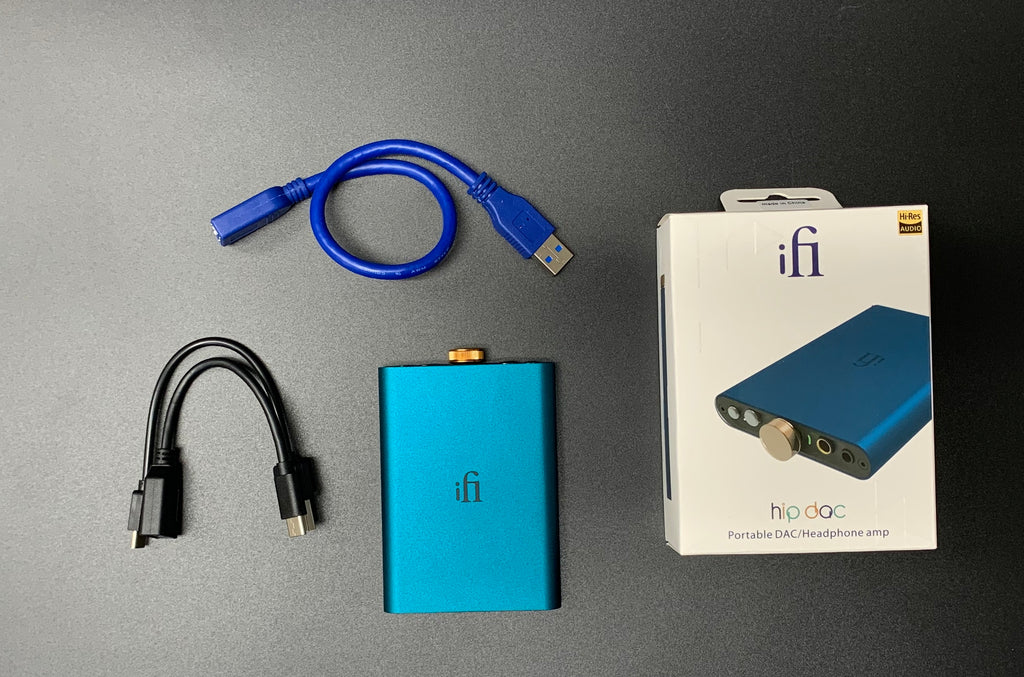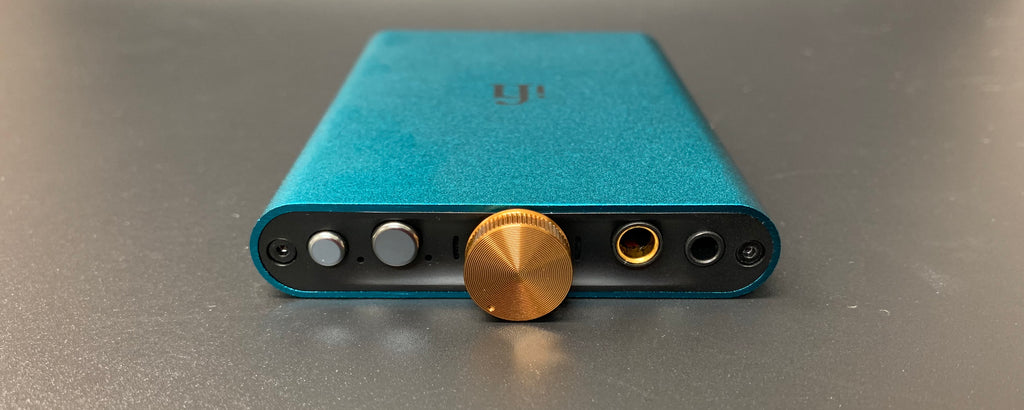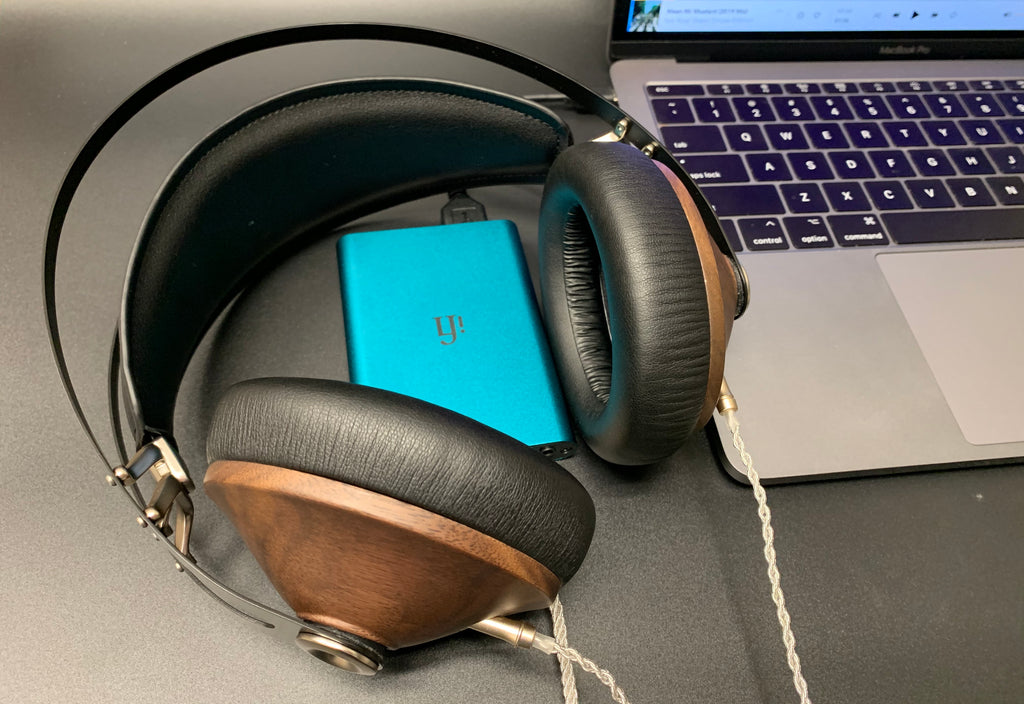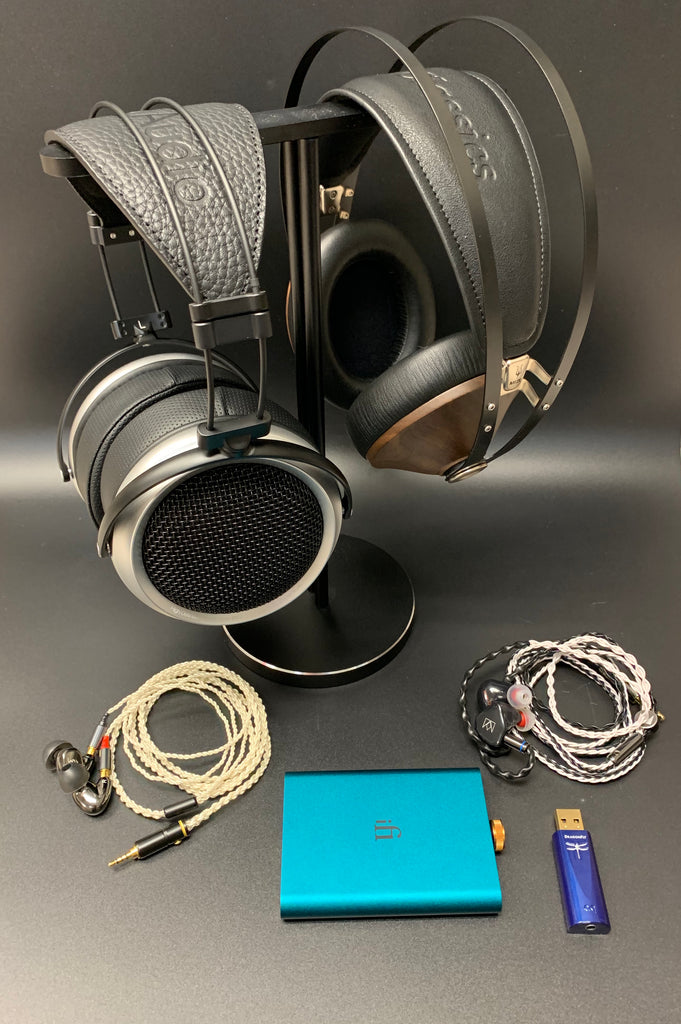Released early in 2020, the iFi hip-dac launched with the goal of bringing audiophile sound in an inexpensive, portable package. With a sleek, pocketable design, and iFi’s pedigree of bringing quality sound across a wide range of price points, is the hip-dac the portable DAC/amp for you?
The Build and Design
The hip-dac is approximately the size of a small smartphone, with a teal brushed metal finish. There’s a big brass volume knob on the front, along with 4.4mm balanced and 3.5mm unbalanced outputs. For input and charging there are two USB ports on the back, with USB-C for charging and iFi’s special inverted USB port for USB audio input. iFi provides the necessary cables for connecting to USB-A and USB-C devices. Additionally, the hip-dac has two buttons on the front: one for IEMatch which adjusts the impedance for more difficult to drive headphones, and the other for XBass, which provides a nice, tasteful enhancement of low-end frequencies.
Internally the hip-dac supports most high resolution file standards, including MQA. The amp is reasonably powerful for a portable unit and should be capable of driving a good range or headphones, particularly if you use the 4.4mm balanced connection. The battery life is up to 11 hours with the 3.5mm unbalanced output, but using balanced, or turning on those IEMatch and XBass switches can shave that down to around 7 hours.
In terms of build quality, the hip-dac is rock solid and seems to be quite durable. It has a nice balanced weight – enough to feel high quality and well-built when you pick it up, but not so much as to be too heavy to inhibit its portability. The knob has a nice, smooth feel, and the buttons are fine, if not particularly noteworthy.
The Sound
The hip-dac has a smooth but energetic sound that’s on the warm side of neutral. It’s overall tuning is much more of a “consumer” sound than an “analytical/critical listening” one. The soundstage is good for a DAC in the under $500, and practically revelatory under $200, but not particularly large. The output is lively and energetic, generating a good sense of impact and dynamics.
I’ve used the hip-dac quite a bit since its release both for casual listening and testing various IEMs and headphones, and I’ve always enjoyed it’s smooth, slightly warm signature. For testing for this review, I tried to hit it from a few different angles. For headphones, I used the iBasso SR2 as a neutral offering to give the hip-dac a clean canvas to paint on, and the Meze 99 Classics to demonstrate how the warmer tuning on the hip-dac would sound with a bassier headphone. For IEMs I went with the oBravo Cupid, which is on the sensitive end and has a bit of a sharp peak in the high-mids/treble, and the Noble Tux 5, as another bassheads option, and also to see how the hip-dac scales up with IEMs that costs 8x as much as it.
The SR2 was the most neutral reference point in this test, and it helped demonstrate a couple aspects of the hip-dac. While the SR2 isn’t particularly hard to drive, I tested it with the IEMatch, and found that there was a clear difference between simply turning up the volume and turning on the IEMatch. Turning up the volume left the SR2 sounding a bit muddy to my ears and didn’t scale the impact up with the volume, but the IEMatch increased the volume, provided better impact, and provided a clearer cleaner output.
With the SR2 picking up a touch of muddiness in some cases, I expected the 99 Classics to have an overpowering low end when paired up with the hip-dac. On the contrary, they had good volume and impact, but the bass was neither muddy nor overpowering. The mids and highs were well balanced, and the bass clearly accentuated and well controlled. The combo proved to be a budget audiophile basshead paradise. I should note that this is my personal set of 99 Classics with at least 100 hours of burn-in, so if you buy this combo on my recommendation, give the drivers some time to settle in before you make your final judgement.
The oBravo Cupid was in some ways a near perfect match, with the hip-dac, with the caveat that while the unbalanced output was good, there was some low hiss with the balanced output. The subtle warmth of the hip-dac provides a good amount of support in the low end for the Cupid, and the smooth treble eliminates any sense of harshness or sharpness for the Cupid’s high end.
The Tux 5 is a very bass heavy IEM, which again might lead to concern that the warmth of the hip-dac would result in poor performance that became overly muddy. I think first of all, if you’ve purchased a Tux 5, you’re probably not sitting there thinking, “Oh no! What if there’s too much bass!” And second, it sounds great with the hip-dac. To my ears, in addition to the pleasant enhancement of the low end, the Tux 5’s low mids, which are a little scooped, get some nice support from the hip-dac, and create a well-balanced sound.
Comparison: Dragonfly Cobalt
As a comparison point, I enlisted the DragonFly Cobalt, another excellent portable DAC/amp in the under $500 range. The two proved to be quite different, and the interactions between each of the headphones and IEMs provides a good comparison point.
For the SR2, I strongly preferred the sound signature of the DragonFly Cobalt.. While the pairing with the hip-dac sounded good, with the DragonFly there was a notable improvement in the soundstage, and it felt like the highs really opened up. The one issue with the pairing of the DragonFly and SR2 is that the DragonFly might not have enough juice for some listeners to achieve their preferred listening volume. I found the ideal volume for me to be at around the 85% mark on the DragonFly vs. 40% on the hip-dac.
Again with the 99 Classics, the DragonFly Cobalt provided a more neutral output than the hip-dac, but there was less of a difference in the soundstage than with the SR2. The DragonFly also lacked the level of physical impact that the hip-dac provided, probably owing to the difference in output levels, with the hip-dac having significantly more headroom for driving over-ear cans than the DragonFly.
While the headphones provided some strong contrasts, the IEMs had more subtle differences. With Cupid, the DragonFly Cobalt provides a more neutral, transparent output, with a little more clarity but without the same low-end support. The Tux 5 had a little more air in the highs, and a little less thump in the bass. The sense of space and imaging is also stronger for the Tux with the DragonFly.
Basically, the DragonFly provided both a more neutral, reference output, and had stronger technical aspects, while the hip-dac was warmer, more “fun,” and can drive a larger range of over-ear headphones more efficiently. Both are quality portable units, and which one is better for you will depend on what kind of sound signature you’re looking for and what kind of headphones you’re using.
The Bottom Line
The iFi hip-dac is the DAC/amp combo to beat under $200 and a strong contender in the under $500 range. It is a powerful capable unit, with a musical, engaging sound signature, and even at twice the price, you’ll be hard pressed to find a unit that delivers that same amount of power in a package this small.

